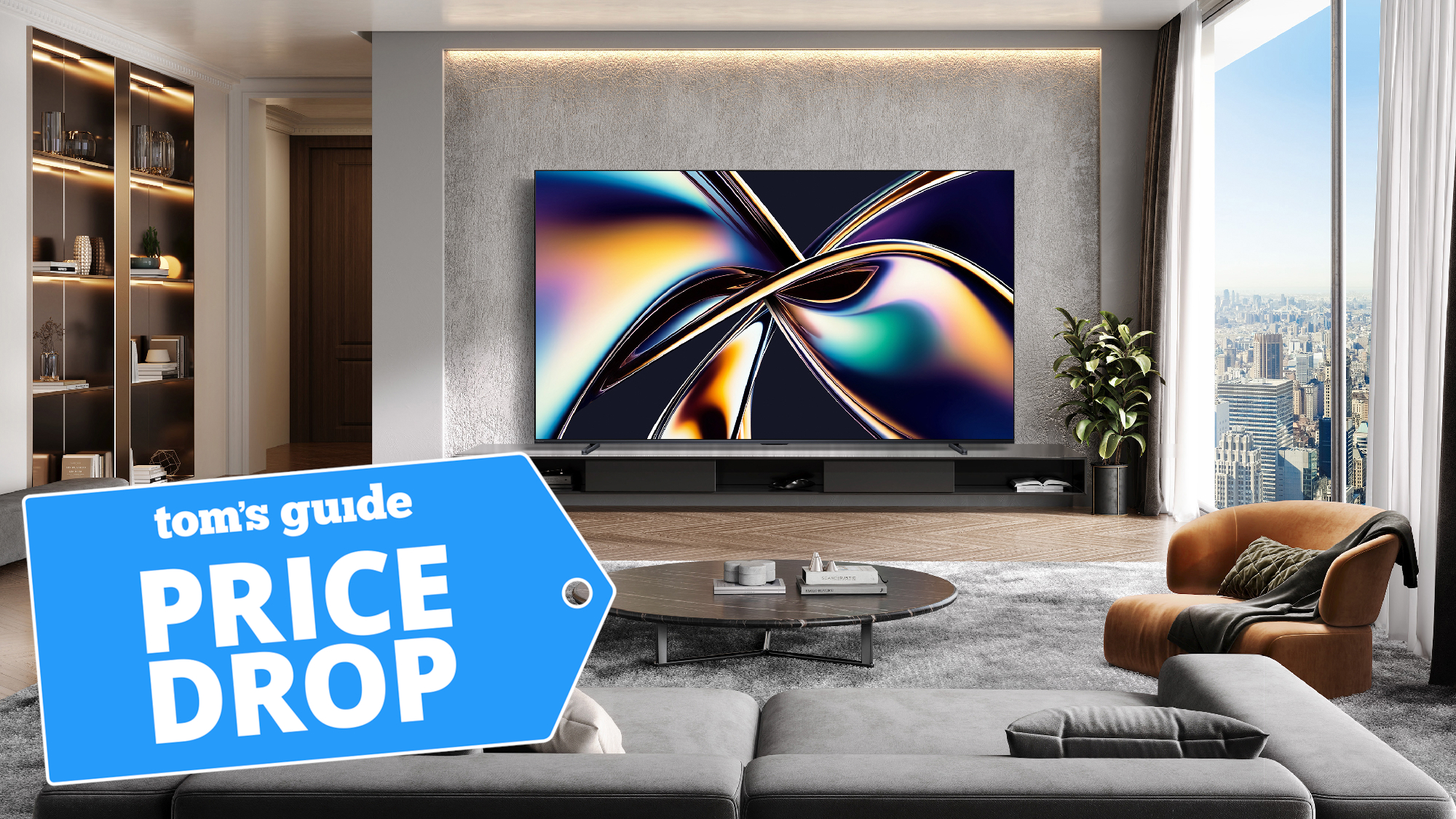Moto G6 vs. Nokia 6.1: Best Androids Under $300 Duke It Out
The Moto G6 and Nokia 6.1 are currently the best values among Android phones. But which is better? The answer might surprise you.
For too long, budget smartphones were miserable devices that promised only the bare minimum and rarely delivered a smooth user experience.
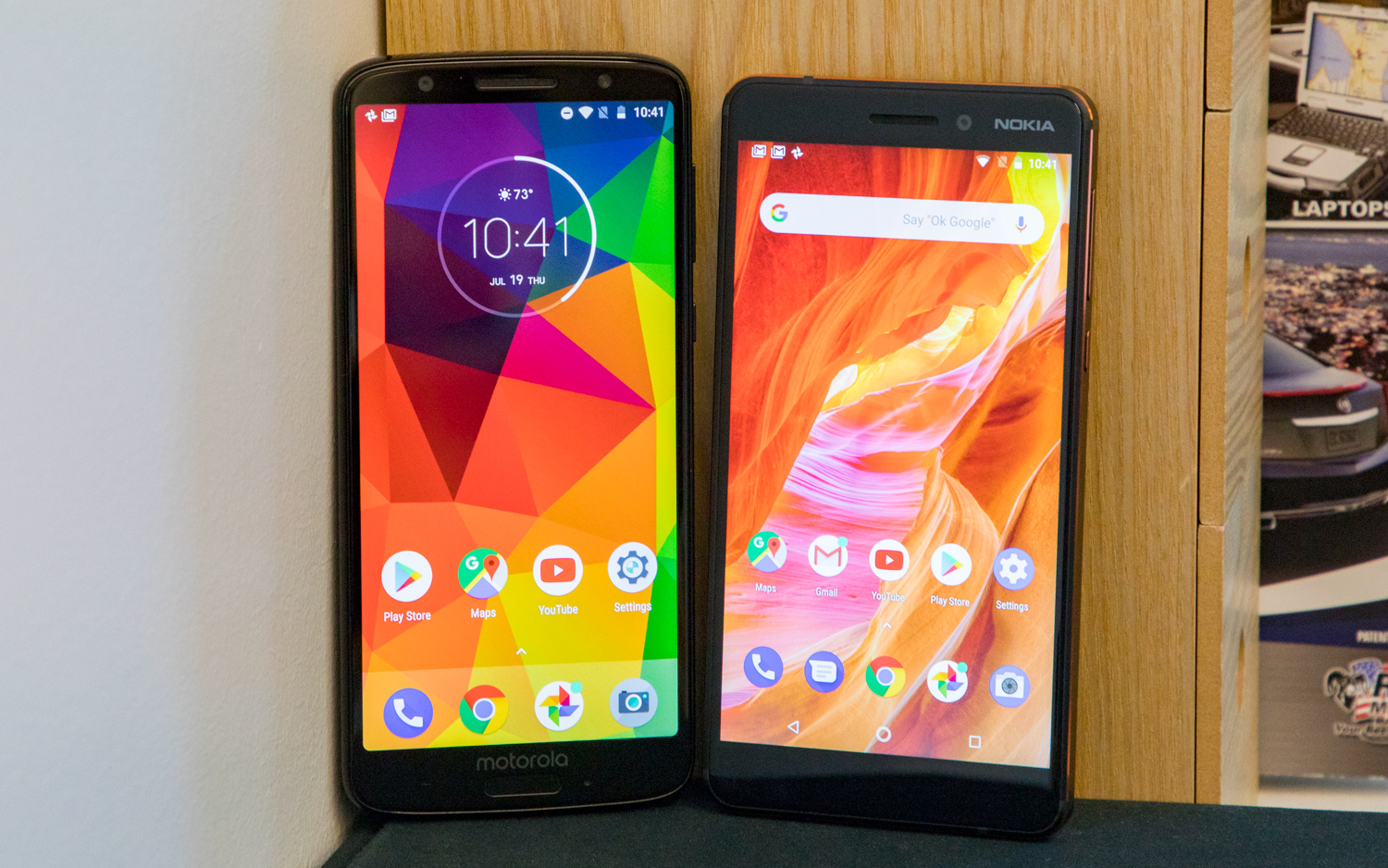
Thankfully, that's changed, and in recent years we've seen a ton of progress made in the $250 space. It's a price point cheap enough for the smartphone to be affordable, but not so cheap that the device lacks quality or innovation, if done properly. And its leaders right now are two unlikely phone makers with a century of history between them: Motorola and Nokia.
The $249 Moto G6 is Motorola's bread and butter — a device that speaks to the company's strength in producing well-rounded, thoughtfully designed handsets that grant you everything you need and don't waste your time with things you don't. It would have been our de facto recommendation for budget buyers, if Nokia hadn't arrived on the scene immediately afterward with the $269 Android One-powered Nokia 6.1.
Both devices are excellent options for those looking to save hundreds of dollars while making relatively few compromises. But which comes out on top? We compared Motorola's and Nokia's best efforts to find the answer.
Specs
| Row 0 - Cell 0 | Moto G6 | Nokia 6.1 |
| Price | $249/$299 | $269 |
| OS | Android 8.0 Oreo | Android 8.1 Oreo |
| Screen Size, Resolution | 5.7-inch LCD (2160 x 1080) | 5.5-inch LCD (1920 x 1080) |
| CPU | Qualcomm Snapdragon 450 | Qualcomm Snapdragon 630 |
| RAM | 3GB/4GB | 3GB |
| Storage | 32GB/64GB | 32GB |
| microSD Slot | Yes, up to 256GB | Yes, up to 256GB |
| Rear Camera | Dual: 12 MP (f/1.8) and 5 MP (f/2.2) | 16 MP (f/2.0) |
| Front Camera | 8 MP (f/2.2) | 8 MP (f/2.0) |
| Battery Size | 3,000 mAh | 3,000 mAh |
| Battery Life (Hrs:Min) | 9:25 | 10:24 |
| Water Resistance | No | No |
| Dimensions | 6.06 x 2.85 x 0.33 inches | 5.86 x 2.98 x 0.32 inches |
| Weight | 6.07 ounces | 5.89 ounces |
Design
The Moto G6 and Nokia 6.1 take opposing perspectives in terms of design.
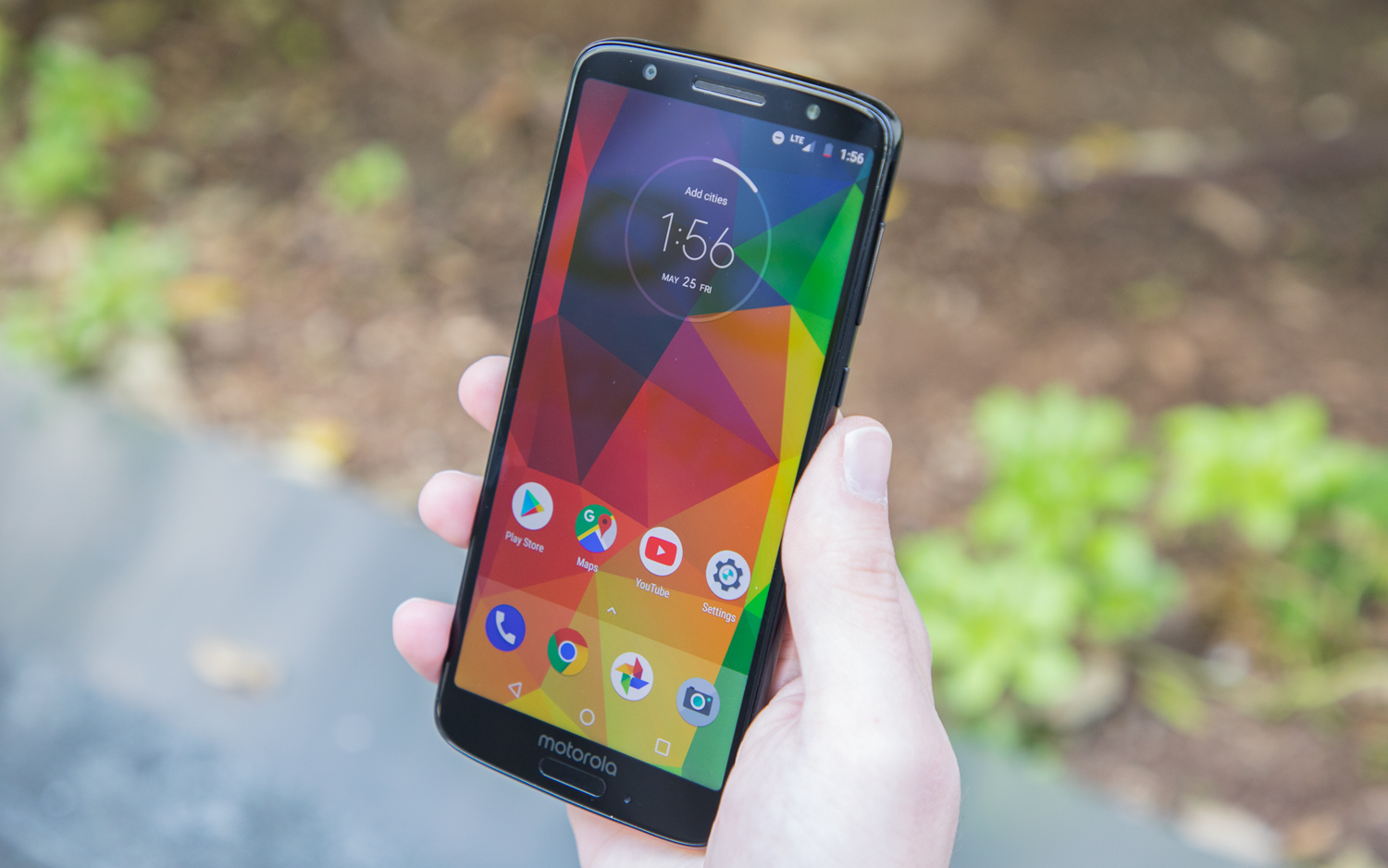
In the case of the G6, Motorola carried over the hallmarks of today's flagships by including an 18:9 screen, smaller bezels and a curved glass back. The result is a phone that's very easy to use one handed and in some ways looks more modern than Nokia's contender.
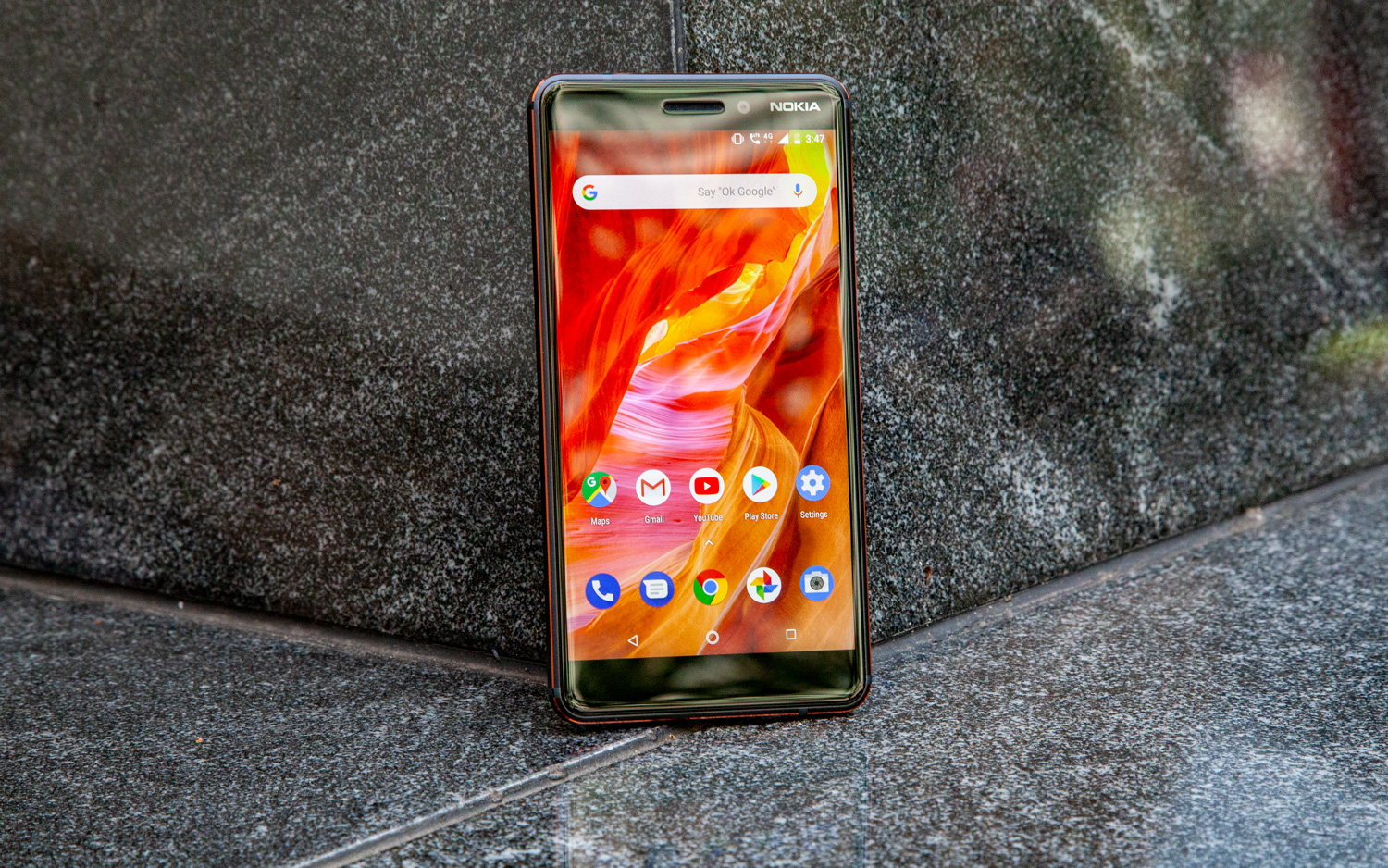
The Nokia 6.1 does appear to be more dated at first glance, based on its 16:9 aspect ratio and all-metal build. It has sharper edges, which make it a bit more cumbersome to hold, and it weighs more. But the heft adds a level of polish and quality that feels distant in the Moto G6. And that's enhanced on the Nokia with shiny copper trim around the frame and camera stack that actually looks fantastic in person.
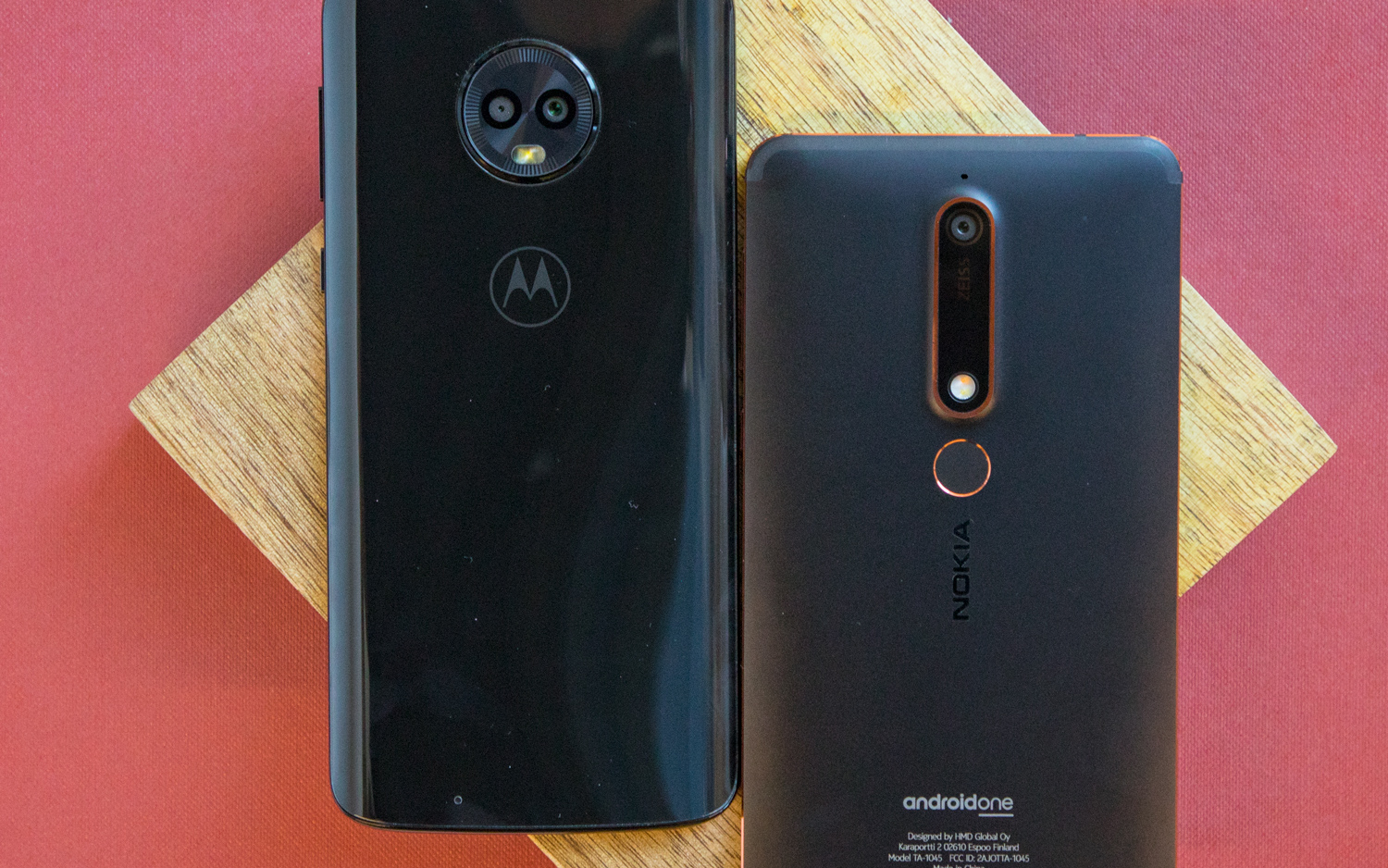
Overall, the Moto G6 gets the slight edge here for its narrower footprint, which makes it more comfortable, pocketable and generally easier to live with. However, Nokia still deserves credit for crafting a very handsome handset with a more businessy, grown-up vibe.
Winner: Moto G6
Display
You can't go wrong with either of these screens. Both the 5.7-inch Moto G6 and 5.5-inch Nokia 6.1 have full-HD LCD displays (full HD plus in the G6's case, because of its 18:9 aspect ratio and additional vertical pixels). That means they're similarly sharp.
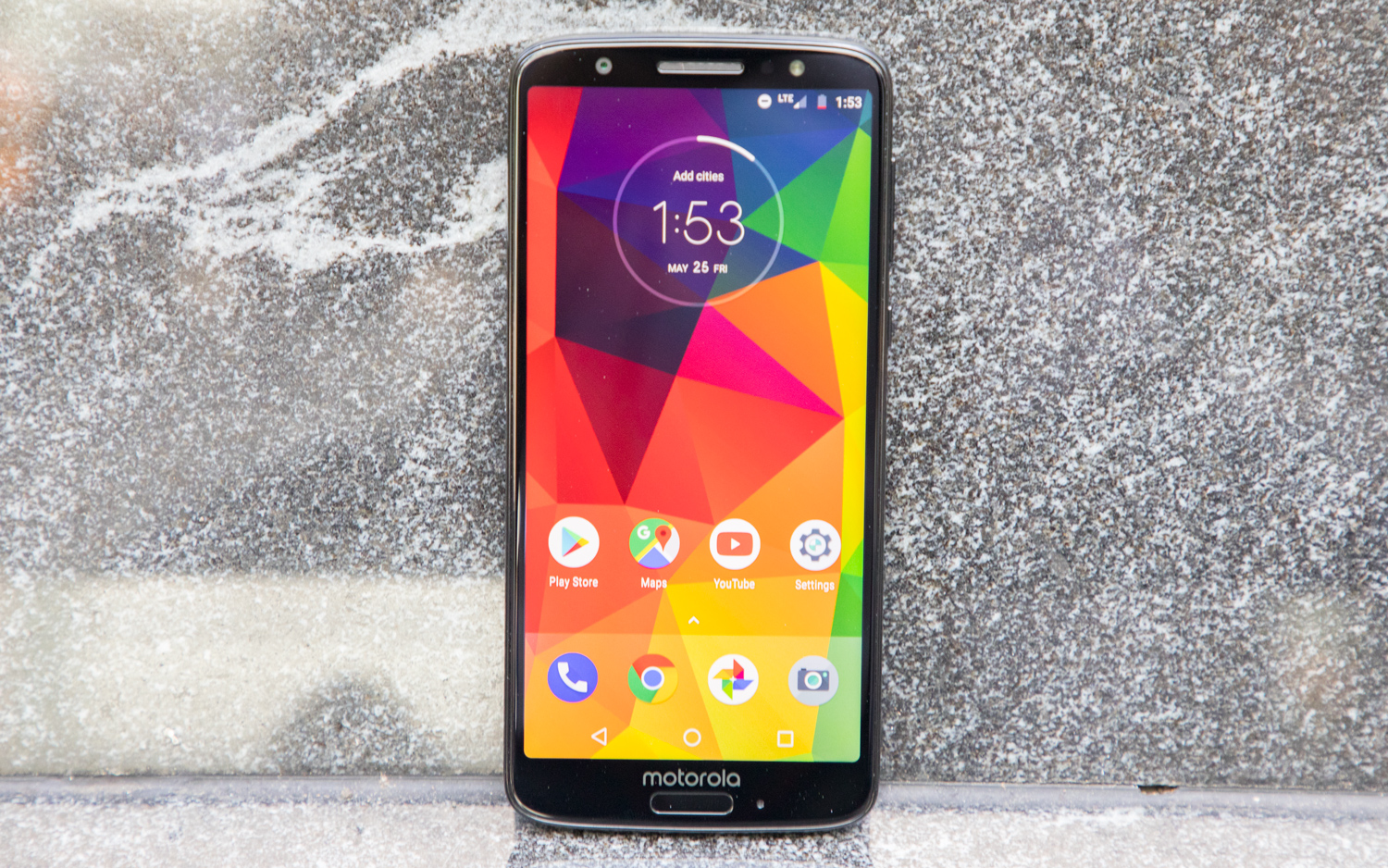
When it comes to brightness and color representation, they're pretty close, too. The Moto G6's panel tops out at 413 nits and covers 113 percent of the sRGB color space. The Nokia 6.1 is a bit more vibrant, notching a peak brightness of 450 nits and a slightly wider color gamut, at 142 percent.
Finally, the Nokia 6.1's display proved a bit more accurate in our testing, with a Delta-E score of 0.26 compared to the Moto G6's 0.39. (Numbers closer to zero are better.) While we like the extra real estate Motorola's screen provides, Nokia's is just a hair nicer, so it takes this round.
Winner: Nokia 6.1
Camera
Expectations are never high for budget phone cameras, and admittedly, neither Motorola nor Nokia has done much to buck that trend with these devices.
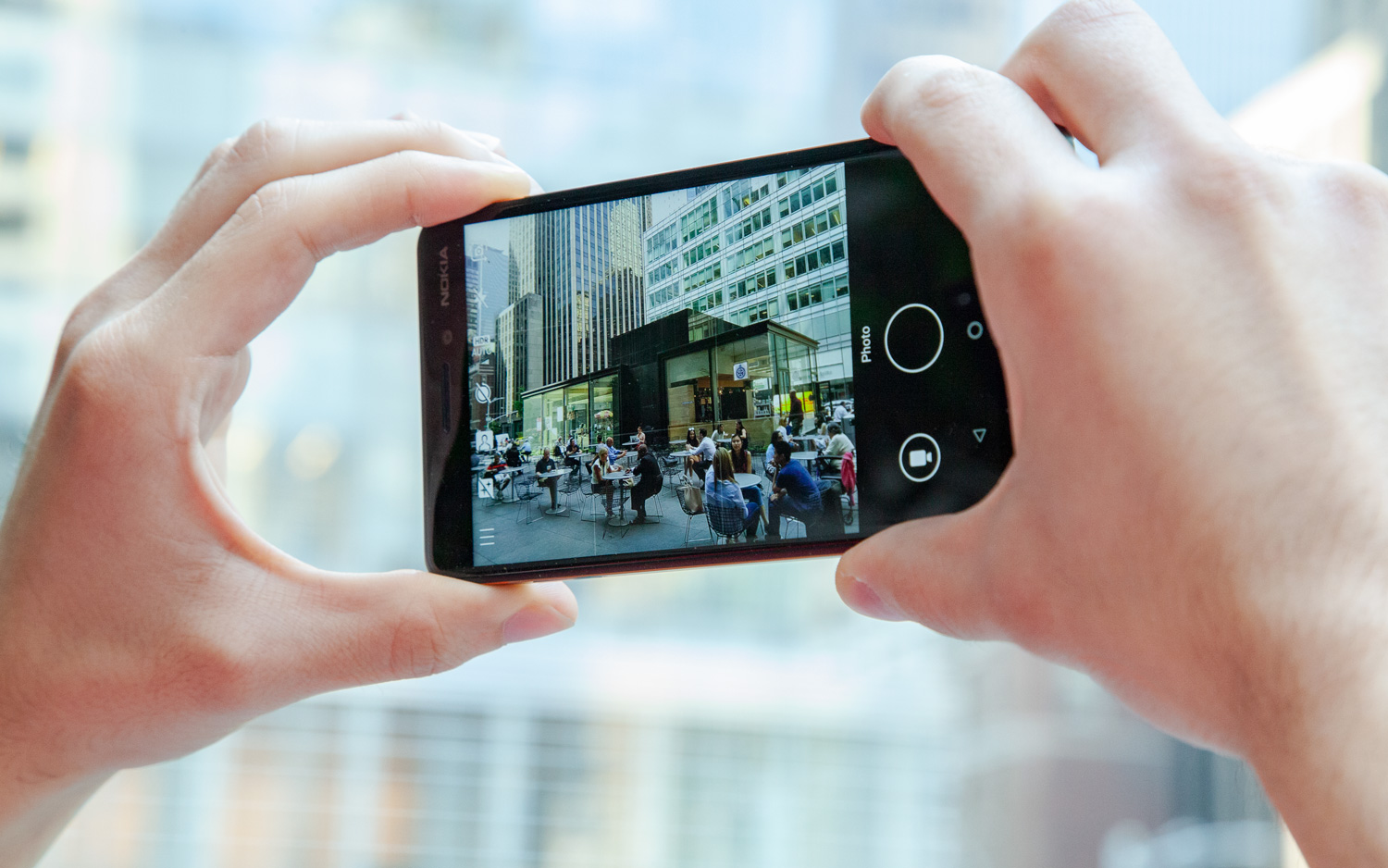
Motorola combines a 12-megapixel, f/1.8 primary sensor with a 5-MP secondary one for depth effects on the G6, while Nokia opted for a single, 16-MP f/2.0 lens on the back of the 6.1.
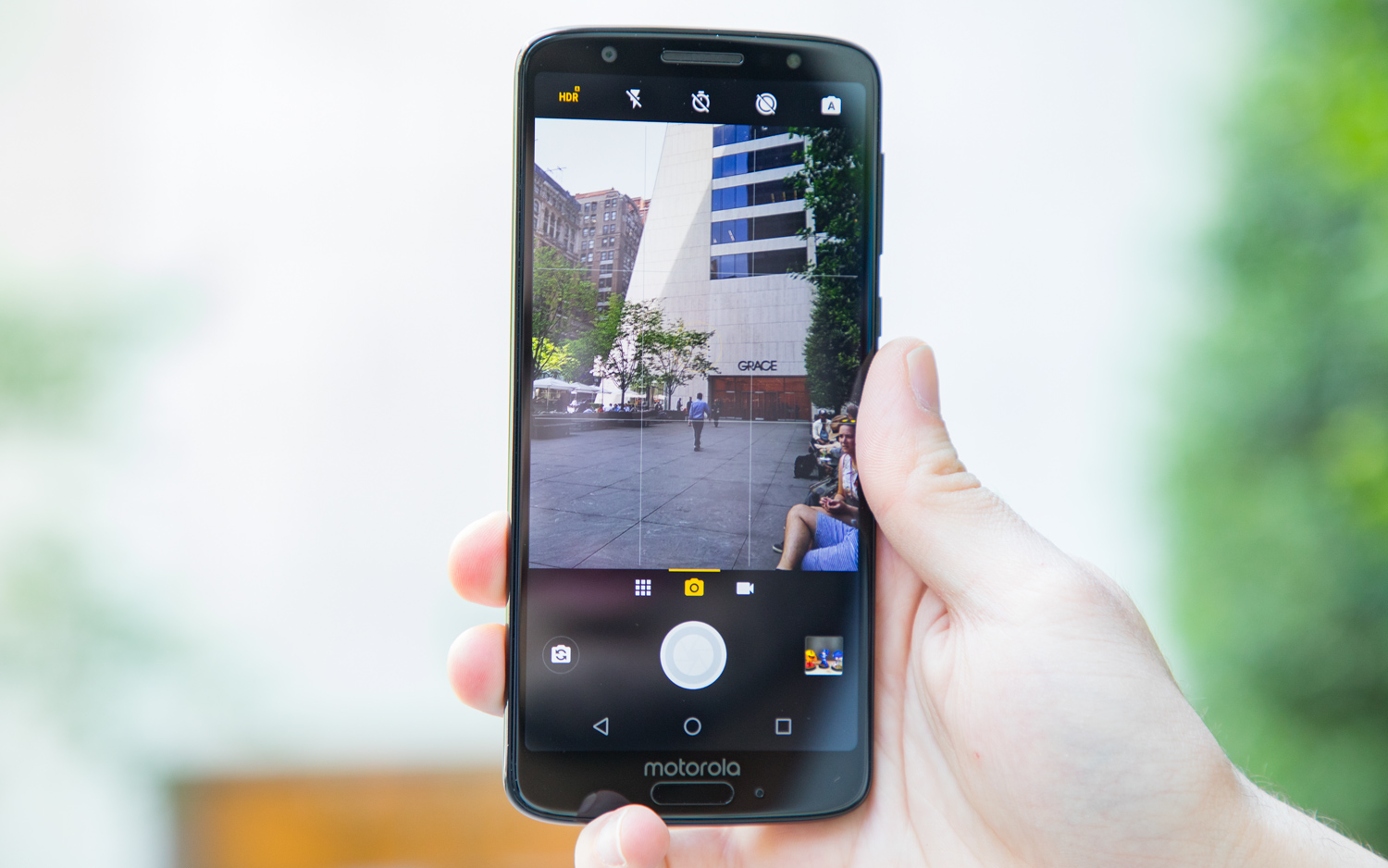
In terms of features, Motorola has the upper hand — at least on paper. That second lens allows for shallow depth-of-field portraits and selective color photos. But, like on so many other cheap dual-camera devices, the level of quality you get from these modes isn't anywhere near the bar set by top-dollar phones with a plurality of lenses, like the iPhone X and Galaxy S9+.
On the whole, the Moto G6 produced cooler shots than the Nokia 6.1, as evidenced in the above photo at a park along the Delaware River on a sunny day. Nokia's shooter pulled out a much more realistic scene, with more neutral white balance and less of the Moto G6’s green-blue tint permeating the entirety of the frame. However, the Motorola’s device exhibited better detail in the shadows and more sharpness overall.
Even with the artistry of the Moto G6's bokeh effect, the Nokia 6.1 delivered a crisper and more balanced portrait. My colleague Jorge definitely stands out from the background better with the help of Motorola's dual-lens tricks, but the blur is applied imprecisely along the limits of the foreground. The Nokia 6.1 also painted the frame with less saturated hues, particularly in Jorge's face.
The Moto G6 did win some points back in low-light photography. This image of a trio of figurines is much better exposed through the G6's wider-aperture lens, with significantly less noise and color bleeding compared to the struggling Nokia 6.1. That makes the Moto G6 a better choice in less-than-ideal lighting situations, though in most other cases, you'll probably want the Nokia.
Winner: Nokia 6.1
Performance
Although the Moto G6 and Nokia 6.1 feature different chipsets, they're actually more alike than their spec sheets suggest.
Motorola chose the brand-new Snapdragon 450 processor for the G6, and paired that with 3GB of RAM. The combination is actually much snappier than you'd expect, given that Qualcomm's 400-series silicon tends to appear in even lower-end models than either of the phones featured here.
The Nokia 6.1 has the same Snapdragon 630 system on chip you may recall from the HTC U11 Life or Moto X4 Android One. However, whereas those phones cost between $350 and $400 when they launched last fall, the Nokia 6.1 is just $269.
MORE: Best Cheap Unlocked Smartphones
The kicker is that the CPU in both chipsets is almost identical. Actually, the Moto G6's Snapdragon 450 actually outperformed the 630 inside the Nokia 6.1 in Geekbench 4 by a score of 3,934 to 3,784. However, across the bulk of day-to-day usage, when opening apps and multitasking, streaming YouTube videos, browsing Google Maps and so on, you're unlikely to notice any difference in speed.
Graphics performance is another story, though. The Snapdragon 630 employs a more powerful GPU, and so it smoked the Moto G6 in 3DMark's Ice Storm Unlimited test, 16,847 to 12,616. If you have any aspirations of hard-core gaming on either of these phones, Nokia's offering will definitely be more up to the task of running games like PUBG Mobile and Injustice 2. That said, don't expect blazing frame rates at this price — you'll have to spend $500 or more if you really want to play triple-A titles the way they were meant to run.
Winner: Nokia 6.1
Battery and Charging
Couple those efficient chipsets with the 3,000-mAh batteries inside both of these phones, and you'd expect great results. However, only the Nokia 6.1 delivered an above-average runtime in our testing, lasting 10 hours and 24 minutes while streaming websites on T-Mobile's LTE network. The Moto G6 paled in comparison, turning in a time of 9 hours and 24 minutes — nearly a half hour less than the 9:48 smartphone average.
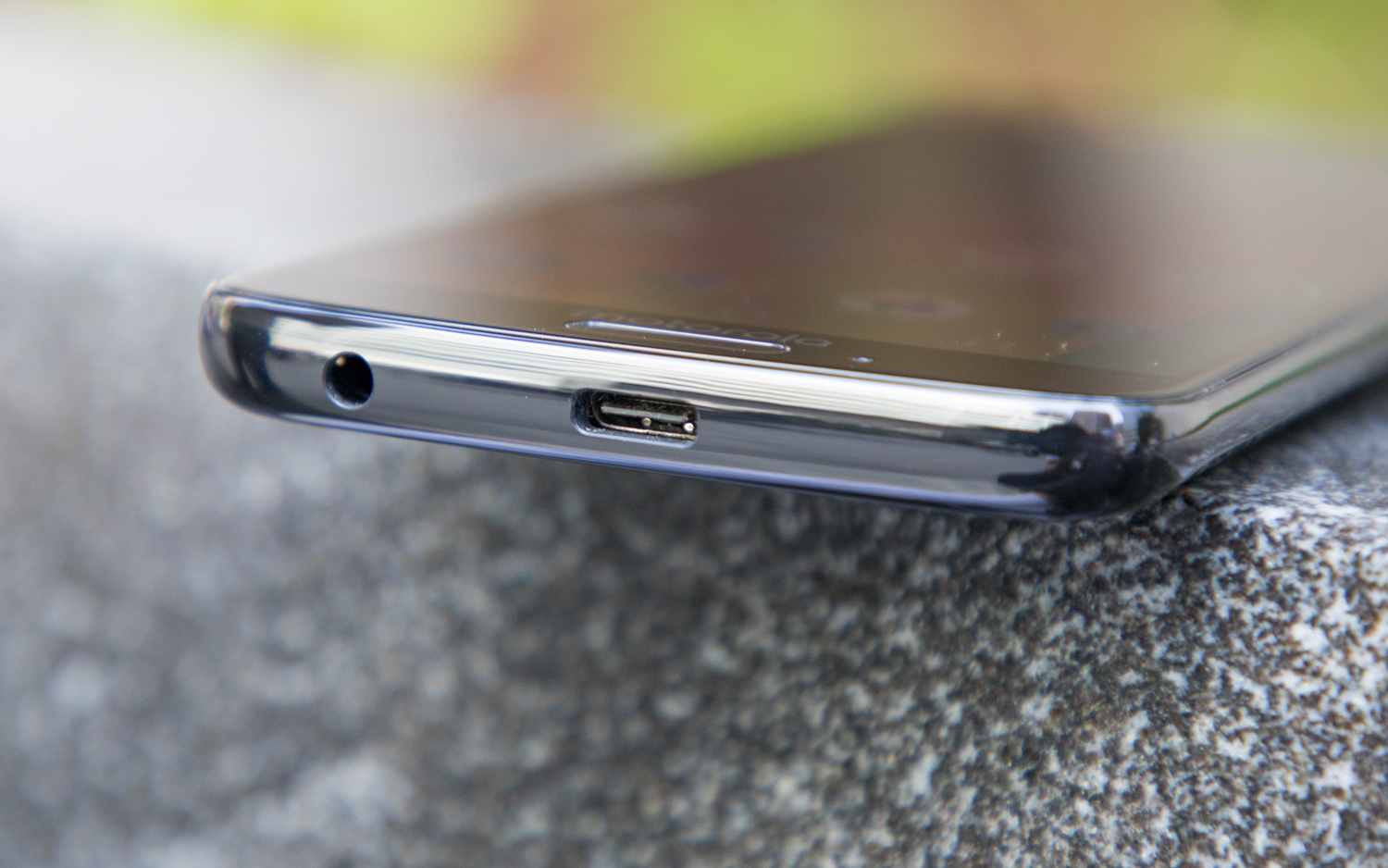
MORE: Smartphones with the Longest Battery Life
Both phones support Qualcomm's Quick Charge protocol over USB Type-C, meaning they'll reach about half capacity in 30 minutes connected to the stock adapter. However, neither handset supports wireless charging.
Winner: Nokia 6.1
Software
Motorola and Nokia have similar philosophies with regard to software. The Moto G6 and Nokia 6.1 each run clean installations of Android Oreo devoid of bloatware and UI customizations, and they're better devices for it.
These are premium software experiences on budget hardware. However, the Nokia 6.1's outlook for updates and continued support is more promising because it is an Android One-branded device. That means users can expect two years of software updates and three years of security patches, which is a year longer in both instances than Moto G6 owners are guaranteed to see.
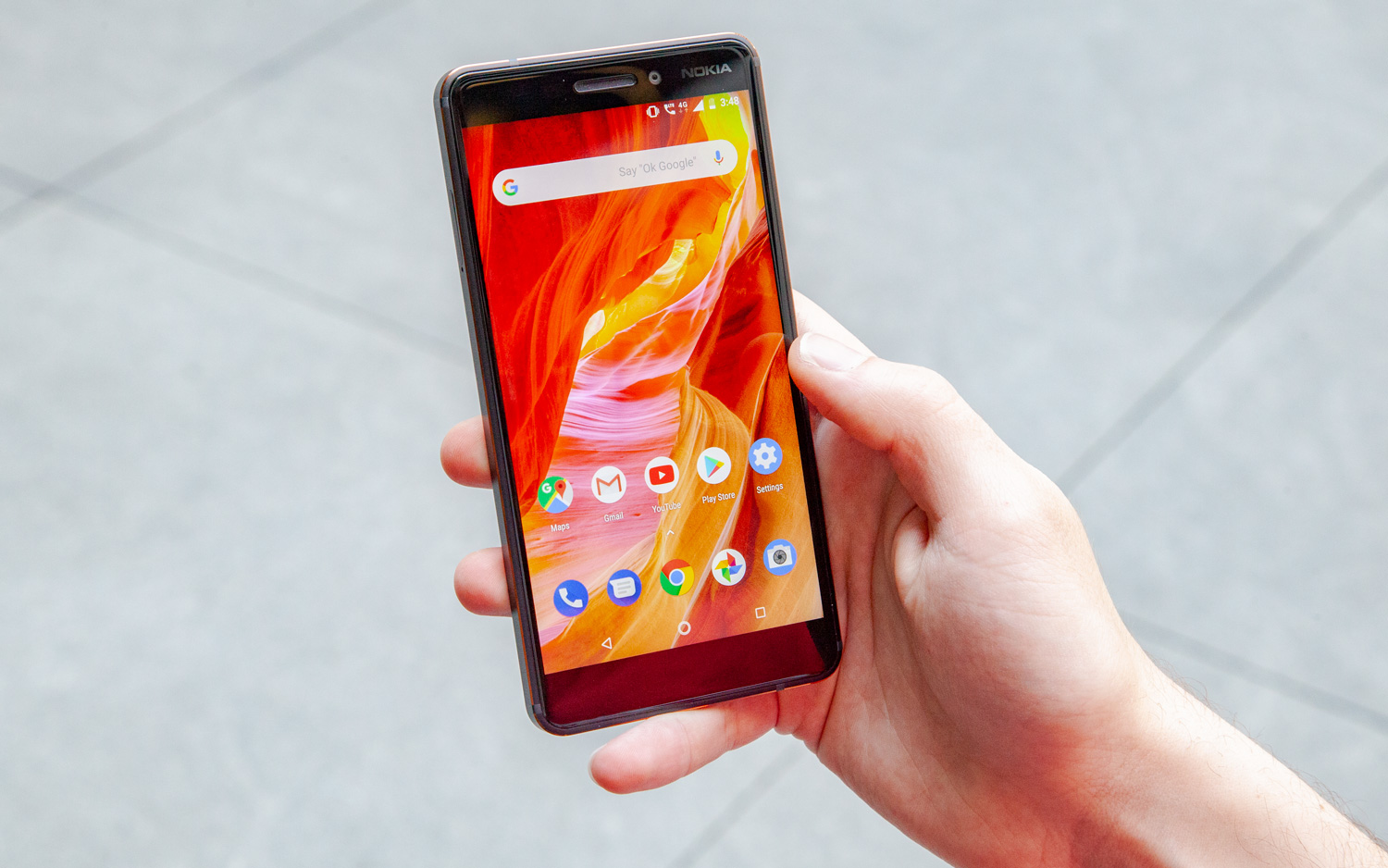
Add to that Motorola's spotty track record with regard to pushing out its Android updates on time, and the Nokia 6.1 really starts to pull ahead. The software on Android One devices originates from Google and is pushed out very quickly, just like on the company's high-end Pixel phones.
Because of the extra year of support, the Nokia 6.1's lifespan should be a bit longer than the Moto G6's, which will probably only get an upgrade to Android P late this year or early next, and that will probably be it.
However, that's not to say Motorola hasn't given G6 owners perks of their own. The Moto app includes exclusive shortcuts and gestures that make the device even smoother to use. Those include One-Button Nav, which uses gestures on the front-facing fingerprint sensor to replace the traditional three-key bar, as well as longtime favorites like chopping to activate the flashlight and twisting to fire up the camera.
Ultimately, Motorola and Nokia are nearly equal on the software front. But the prospect of continued support for the Nokia 6.1 gives it the edge.
Winner: Nokia 6.1
Value and Availability
The $249 Moto G6 comes in at a price that's $20 less expensive than the Nokia 6.1, and it works on more carriers, too. While the Nokia 6.1 only works on GSM carriers like AT&T and T-Mobile, the Moto G6 also picks up CDMA bands, so it'll run just fine on Verizon, Sprint and likely any other network you can name.
The Moto G6 also belongs to Amazon's line of Prime Exclusive phones. Subscribers to the service can get the device for $234. There is also a variant with twice the storage and 4GB of RAM for $299. The Nokia 6.1 only comes in a 32GB configuration, but both phones feature microSD slots for expandable storage.
Winner: Moto G6
Overall Winner: Nokia 6.1
It might come as a surprise, but Nokia has truly arrived with its latest budget phone. The Nokia 6.1 takes the same attention to detail that most manufacturers reserve for their priciest products and passes that along to consumers who don't need class-leading performance, but still want a polished device that will last them for years to come.
| Row 0 - Cell 0 | Moto G6 | Nokia 6.1 |
| Design (10) | 8 | 7 |
| Display (15) | 9 | 10 |
| Cameras (20) | 8 | 10 |
| Performance (10) | 5 | 6 |
| Battery and Charging (20) | 12 | 15 |
| Software (10) | 7 | 9 |
| Value and Availability (15) | 14 | 10 |
| Overall (100) | 63 | 67 |
The fact that the Nokia 6.1 edged the still-excellent Moto G6 in this comparison is a testament to the lengths Nokia has gone to reintroduce itself to the market. From its all-aluminum design to its class-leading performance, long-lasting battery and unparalleled software experience, the Nokia 6.1 is really a budget Pixel by another name.
Unfortunately though, it simply won't be an option for half the wireless customers in the U.S. Fortunately, the Moto G6 is a fine alternative, with a few advantages of its own, like a more compact and modern design, occasionally fun camera features and clever gestures. But if you've only got $300 or less to spend, are on the proper carrier and want the best, Nokia has your answer.
Credit: Tom's Guide
Sign up to get the BEST of Tom's Guide direct to your inbox.
Get instant access to breaking news, the hottest reviews, great deals and helpful tips.
Adam Ismail is a staff writer at Jalopnik and previously worked on Tom's Guide covering smartphones, car tech and gaming. His love for all things mobile began with the original Motorola Droid; since then he’s owned a variety of Android and iOS-powered handsets, refusing to stay loyal to one platform. His work has also appeared on Digital Trends and GTPlanet. When he’s not fiddling with the latest devices, he’s at an indie pop show, recording a podcast or playing Sega Dreamcast.
-
sgargalbany If the Nokia 6.1 is better, then why in the Best Unlocked Smartphones is it not listed under Best Phone under $300?Reply -
toddbeall I'm also confused in that you say in the article that the Nokia weighs more, but your specs say exactly the opposite. Which is it?Reply -
ridhimasane both phones are amazing if we see in terms of specifications and features . The design of both the devices is solid and looks sturdy as well. So if you are really interested with nokia then go with nokia 6.1 .Reply
